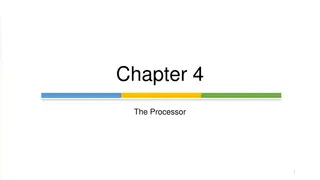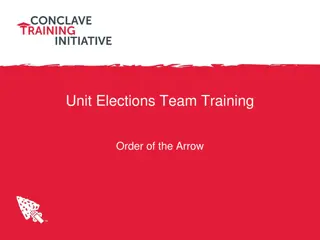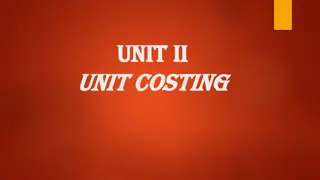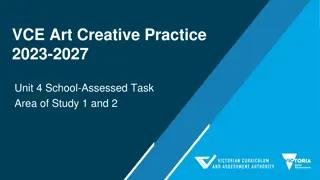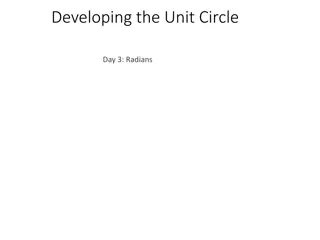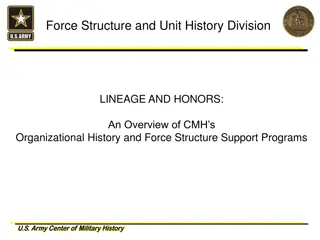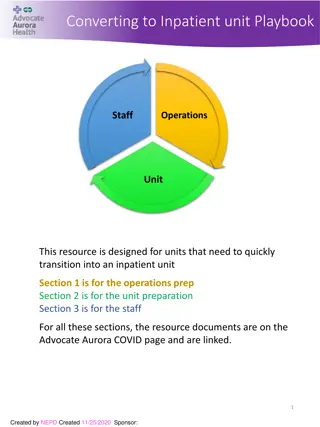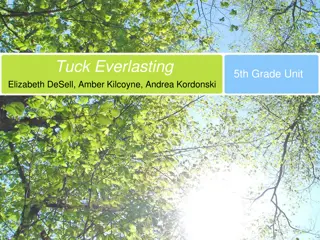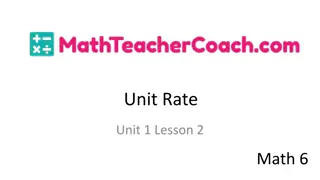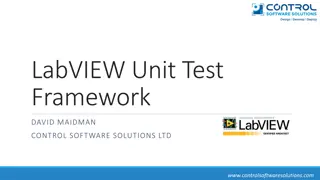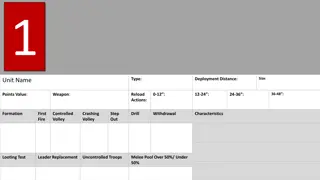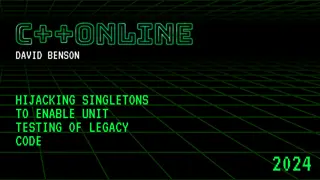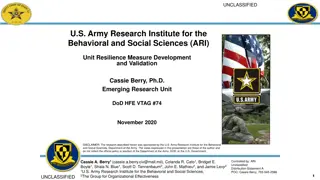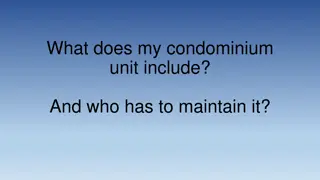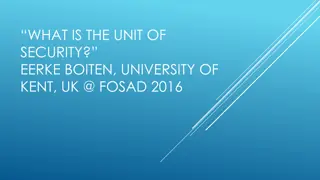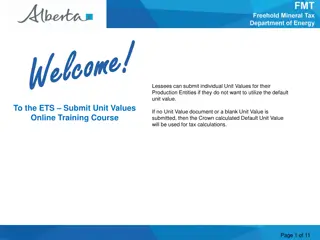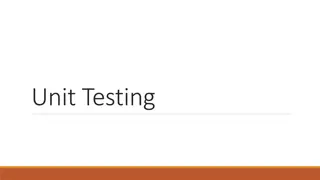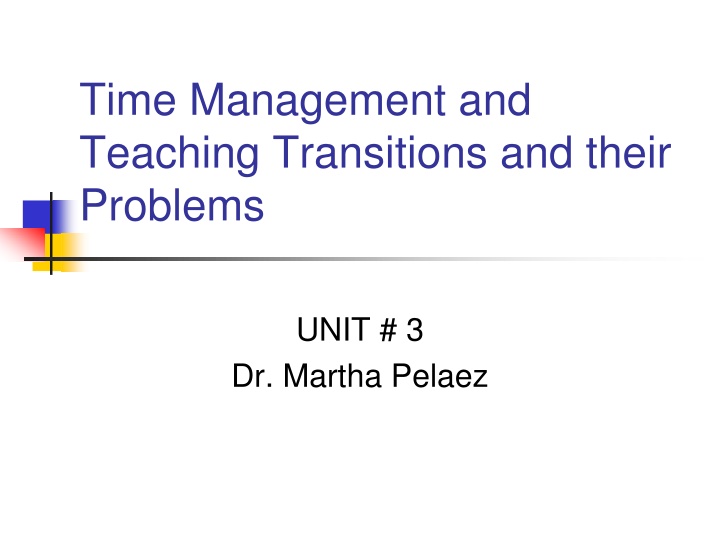
Effective Time Management Strategies for Teaching Transitions
Discover the importance of time management in education, learn about instructional time allocation, and understand how actual time usage impacts student learning. Find out how maximizing instructional time can lead to a more efficient classroom with improved student outcomes.
Download Presentation

Please find below an Image/Link to download the presentation.
The content on the website is provided AS IS for your information and personal use only. It may not be sold, licensed, or shared on other websites without obtaining consent from the author. If you encounter any issues during the download, it is possible that the publisher has removed the file from their server.
You are allowed to download the files provided on this website for personal or commercial use, subject to the condition that they are used lawfully. All files are the property of their respective owners.
The content on the website is provided AS IS for your information and personal use only. It may not be sold, licensed, or shared on other websites without obtaining consent from the author.
E N D
Presentation Transcript
Time Management and Teaching Transitions and their Problems UNIT # 3 Dr. Martha Pelaez
Basic Assumptions About Time Time is like money Once it is gone, it is gone. It can be managed. It is cumulative. Time IS money Time is the basic currency in education, like money time needs to be managed in order to have an efficient and effective classroom The most precious educational resource. Converts directly into student learning. The amount you have depends on your management.
Two Elements of Instructional Time Allocated time: time allocated for school over all, including nonacademic activities. Actual time: time spent on academic activities
3 Levels of Allocated Time School time: amount of time students are in school Factors: length of day, student absences Class time: amount of time students are in your classroom Factors: Lunch, recess Instructional time: amount of time in which students are engaged in instructional activities Factors: organizational activities, interruptions
Actual Time The way in which instructional time is actually used regardless of plans or intentions. Variables affecting actual time: Start and stop times Transition times Time on-task Opportunities to respond (OTR) Matching student ability Interruptions
So what? You must make the most of every minute and squeeze as many minutes as possible out of the day, because There is a very strong correlation between time used in school and student learning. You, teachers, are primarily responsible for managing instructional time.
Whats In It For Me? The benefits of following these time management guidelines are: Your classroom is more efficient and orderly. Your students pay better attention (more on-task) Your students are less disruptive (less off-task) Your students achieve more You ll feel like you are in control and be a more effective teacher
How to manage instructional time Who is involved in time management The teacher The students The parents The students job Maintaining a high level of academic productivity Coming to class with a pencil, paper, and book Coming to class on time In seat and working when the bell rings Coming to class with homework completed Transitioning quickly and quietly Following classroom rules
How to manage instructional time The parents job Knowing the expectations of the teacher and school Making sure the student has homework finished Sending the student to school Making sure student is at school Maintaining regular contact with the teacher
How to manage instructional time-the teacher s job Save time by organizing materials the day before you are going to use them How to manage interruptions On the outside of your door post a note: Our time is short, we re busy trying to stretch it. Please leave a note Have a pencil and a piece of paper for notes Select extracurricular activities carefully with attention on their educational value not on their entertainment value
How to manage instructional time When selecting the importance of educational activities use the big rocks criteria Think of instructional time as an empty jar The big rocks are the most important activities State mandated activities (3 R s), concepts that take time to learn The small rocks are the least important activities If you have to get the most rocks in the jar, put the big ones in first and the small ones will fill up the spaces left by the big rocks
How to manage instructional time Use a digital timer to help you to manage time Reward students for work productivity and accuracy the faster they work the more time you will have to do other more fun things Limit planning interruptions
Managing instructional time Arrange activities in logical sequence Basic skill instruction before lunch (peak level of functioning) Structure periods of low alertness with praise and participation (active student responding) Grandma s Law (Premack Principle): induce a low probability behavior by making a high probability outcome contingent upon it. (If you want your ice cream, then eat your peas first.) Schedule an activity that students like immediately after one that they don t like.
Managing instructional time Give students frequent opportunities to respond (OTR) during instruction. (e.g., guided notes, response boards) The most efficient way to do this is through active student responding -ASR. We ll discuss this under managing group instruction. Match materials and assignments to students abilities/skill level. Individual instruction (e.g., peer tutoring) Ability grouping
Managing Actual Time (contd) Manage disruptions that occur during planned activities For students who disrupt class: reinforce appropriate behavior (try this first) or provide warning or loss of privileges when misbehaving
ASR Q: A:Teacher, parents, and students (21, 16, 27) Q: What is the teacher s job in managing time? A:Protecting in-class instructional time (11, 13, 3) Who is involved in managing time?
Q; What should every good teacher have to help her or him manage instructional A: A digital timer (29, 17, 4) time?
Managing instructional time Develop roles for others Using people to assist you will enable you to assist others who need it You are outnumbered in the classroom and need to turn a possible liability into an asset
Develop roles for others Develop a list activities for others In developing the list ask yourself: Which jobs are the most difficult Which jobs are the most important Which jobs require good math, reading, or spelling skills Which jobs require good organization and neatness Which jobs require good observational skills
Developing roles for others Recruit people to volunteer in your classroom Parents, volunteer groups, senior citizens, college students, retired teachers, professors Teach classroom helpers EXACTLY WHAT, WHEN, WHERE, AND HOW TO help you
Develop roles for peers Paper passer Attendance taker Good behavior monitor Group leader Teaching assistant
Develop roles for school personnel Good behavior ticket passer Parent caller Student praiser Teacher of unique activities Personal mentor in secretarial, janitorial, or other duties
Reward helpers often and well Notes and cards from the students Take the helpers out for lunch Make an in class appreciation lunch Give the helper a certificate of appreciation Call their supervisor and tell her what a wonderful job the helper is doing
Transitions Transition time is the time it takes to change from one activity to another Examples: Changing from one subject to another Moving seats for group activity Changing classrooms Coming/Going to lunch or PE Because transition time tends to be less structured, students tend to be more disruptive.
Managing transition time Transitioning is often the largest thief of instructional time Teach students how to transition quickly and quietly just like you would any other subject
What Makes Efficient Transitions? Well planned and taught transition procedures Clear expectations of student behavior during transition Student readiness, to end a current activity and to begin a new one Teacher readiness for the next activity
Managing Transition Time Prepare in advanced for each lesson/activity for the entire day All materials should be prepared before school and placed where they are to be used. Why? Because it allows you to monitor and praise student behavior during transitions Teach students how to handle transitions
Benefits of Teaching Transitions Minimizes the amount of nonacademic time students spend in school Provides teachers with more academic instruction time. Decreases the number of behavior problems that occur during unstructured time.
Teaching Transitions 4 rules that should be posted: Move quietly Put your books away and get what you need for the next activity (you may need to be specific) Move your chairs quietly Keep your hands and feet to yourself Define transitions You and students read rules Model the rules Have students practice with feedback Have them go back and do it again, if they didn t get it the first time.
Other Tips for Transitions Have a clear signal for transitions Use a timer and tell students how long their transitions take Use praise more often than you do during work times From time to time, review the rules Provide time warnings (i.e., You have 1 minute left.)
Typical Problems with Transitions Students talk loudly at beginning of period. Establish a routine with clear expectations and have activity ready to begin at once. Teacher delays activities to look for materials, finish attendance, pass papers, etc. Have materials organized ahead of time and avoid doing anything that interferes with your monitoring during transitions
Typical Problems with Transitions Students socialize too much during transitions, especially after assignment is given but before they begin working on it. Students don t start the activity for several minutes. Post the assignment. For whole group, work on first few items together. For small group, assign task-focuser for each group. Monitor all work.
Typical Problems with Transitions Teacher attempts to transition students, but students keep working on previous activity and delay the start of the next activity or results in confusion. Give a few minutes warning before the end of an activity. Actively monitor transitions. Do not start the next activity until students are ready.
Typical Problems with Transitions As teacher gives directions, students don t pay attention. Don t give instructions DURING the transition. Give whole class instruction before the transition. Wait to explain activity until students are ready and listening. One or two slowpokes delay the rest of the class. Don t hold up the class. Find out why they are having trouble and give feedback and supervision.
Typical Problems with Transitions Students leave their seats, come ask the teacher questions, request hall pass, sharpen pencils, etc. during transitions. Review transition rules. Provide specified times to talk to teacher and procedures for pencil sharpener, etc. Five or more minutes before the period ends, students quit working, put up books, and begin to socialize. Often desks are left out of order and paper on the floor. Establish end-of-period routine so students will work until you give signal to pack up . Include cleaning their area. You dismiss the students, not the bell.
ASR ________ _______is the time it takes to change from one activity to another Transition time What do we call time actually spent on academic activities? Actual time True or false. There is no correlation between time used in school and student learning. False
ASR What item can you use to help manage start and stop times of activities? Timer What do we call time allocated for school over all, including nonacademic activities? Allocated time True or false. The student is always right means the student s behavior will always indicate what instruction is effective for him or her. True
ASR List one of the four student rules for transitions. Move quietly Put your books away and get what you need for the next activity (you may need to be specific) Move your chairs quietly Keep your hands and feet to yourself
ASR List one of the benefits of using the time management guidelines? Your classroom is more efficient and orderly. Your students pay better attention (more on- task) Your students are less disruptive (less off-task) Your students achieve more You ll feel like you are in control and be a more effective teacher
ASR One way to manage actual time, is to manage students on-task behavior. How do you do this? By using reinforcement (e.g., praise, token economy, point system) Another way to manage actual time is to provide students with plenty of _____ ____ _____. Opportunities to respond (OTR) Give an example of Grandma s Law or Premack Principle. If you want your icecream, then you have to eat your peas first. Or, give students a task they like immediately after a task they don t like.
ASR List one of the six ways to manage ACTUAL time. Manage start and stop times of all planned activities Manage transition times carefully. (See transition section) Manage students on-task behavior by using reinforcement. Give students frequent opportunities to respond (OTR) during instruction. Match materials and assignments to students abilities/skill level. manage disruptions that occur during planned activities
ASR List one problem characteristic of many classrooms Too much waste of time Emphasis on non-academics Ineffective curriculum and instruction Insufficient measurement
Name one person or group of people to recruit to work in your classroom Parents Community service organizations Senior citizens Retired teachers College students
Name one job for peers Paper passer Attendance taker Good behavior monitor Group leader
Name one job for others Good behavior ticket passer Parent caller Student praiser Teacher of unique activities Personal mentor in secretarial, janitorial, or other duties
When should you reward classroom helpers Often and well


